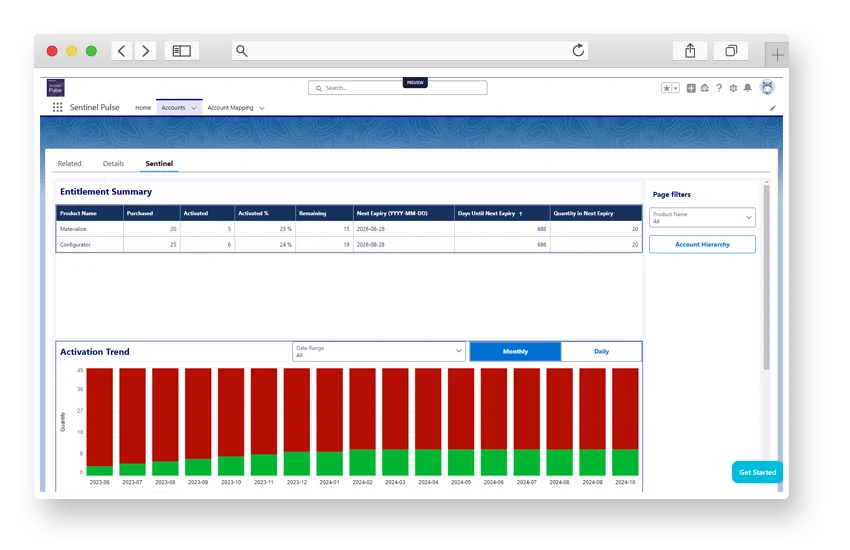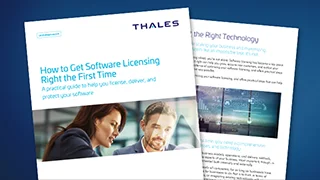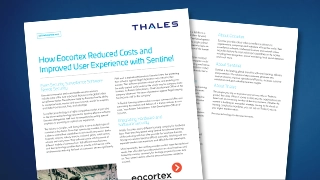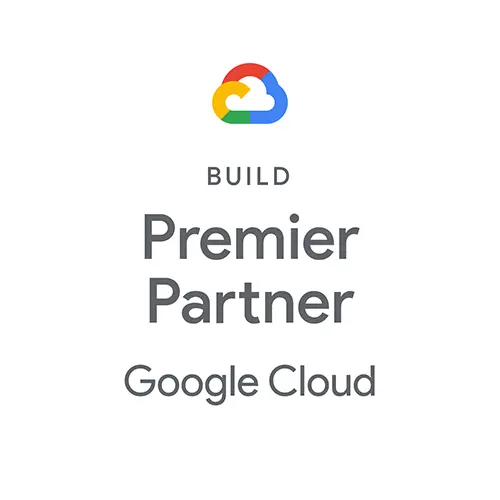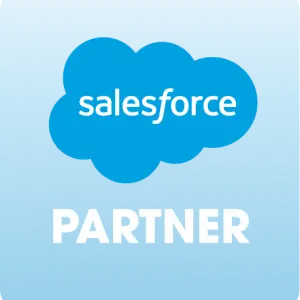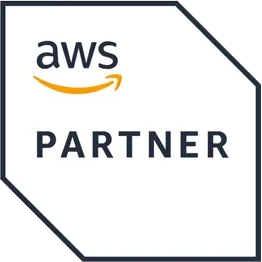What Is Software Monetization?
Software monetization is the practice of maximizing revenue from software products by:
- Protecting existing revenue – preventing misuse and controlling access
- Growing new revenue – establishing flexible packaging and business models
Why Software Monetization Is Critical in 2025
The Pain Points Driving Change
Revenue Leakage Is Everywhere
- Intentional misuse, copying, stealing, or manipulating. Software piracy affects 37% of software worldwide, with rates as high as 68% in emerging markets.
- Lack of enforcement and unintentional misuse. $15.8 billion revenue opportunity if suppliers could convert pirated software into revenue.
- Lost business. Customers abandon purchases due to inflexible pricing options.
Customer Expectations Have Evolved
- Subscription model demand. Software buyers expect subscription options.
- Price and security priorities. When searching for software, price (49%) and security (48%) are the most important factors buyers care about.
- Instant activation requirements. Immediate activation is now table stakes.
- Self-service portal expectations. Self-service capabilities are expected, not nice-to-have.
Vendor Requirements Are Intensifying
- Rapid pricing model deployment. Time-to-market for new pricing models must be weeks, not months.
- No-engineering packaging changes. Packaging changes need to happen without engineering resources.
- Usage insights advantage. Usage insights are becoming competitive advantages.
- Pricing flexibility impact. Customer churn is increasingly tied to pricing flexibility.
How To Develop a Software Monetization Strategy
Building a software monetization strategy starts with recognizing it’s not a one-off choice but a playbook you run over and over. The strongest companies design that playbook with two parts: defense and offense. One part protecting today’s revenue. The other part unlocking tomorrow’s growth.
On defense, your priority is securing the valuable products, and the revenue, that you’ve already created. You need to think about protecting your IP against piracy, theft, and copying, and enforcing licenses so users can only access what they are entitled to.
On offense, creating new revenue streams, without heavy investment in R&D, is the name of the game. .This is where you want to be able to test new pricing models, refine packaging, and move fast to keep up with evolving customer expectations.
The art of a solid software monetization strategy involves bringing both parts of the playbook together, A strategy focused only on defense risks stagnation. A strategy built only on offense risks collapse. The best monetization happens when you run the full playbook—protecting the value you have while creating the runway for what’s next.
What Are the Core Components of Software Monetization?
Having established that effective software monetization requires both defensive protection and offensive innovation working in harmony, the question becomes: how do you actually build and execute this dual-approach playbook? The answer lies in understanding that successful monetization isn't just about having the right strategy on paper—it's about having the operational foundation to implement that strategy consistently and adaptively. This foundation consists of specific, interconnected components that serve as the building blocks for both protecting your current revenue streams and creating new ones. These components work as an integrated system, each one reinforcing the others to ensure your monetization strategy can defend what you've built while remaining agile enough to capitalize on emerging opportunities.
Software monetization relies on five interconnected components that work together to protect value, enforce terms, enable flexible offerings, and drive growth through data-driven insights and adaptive pricing strategies.
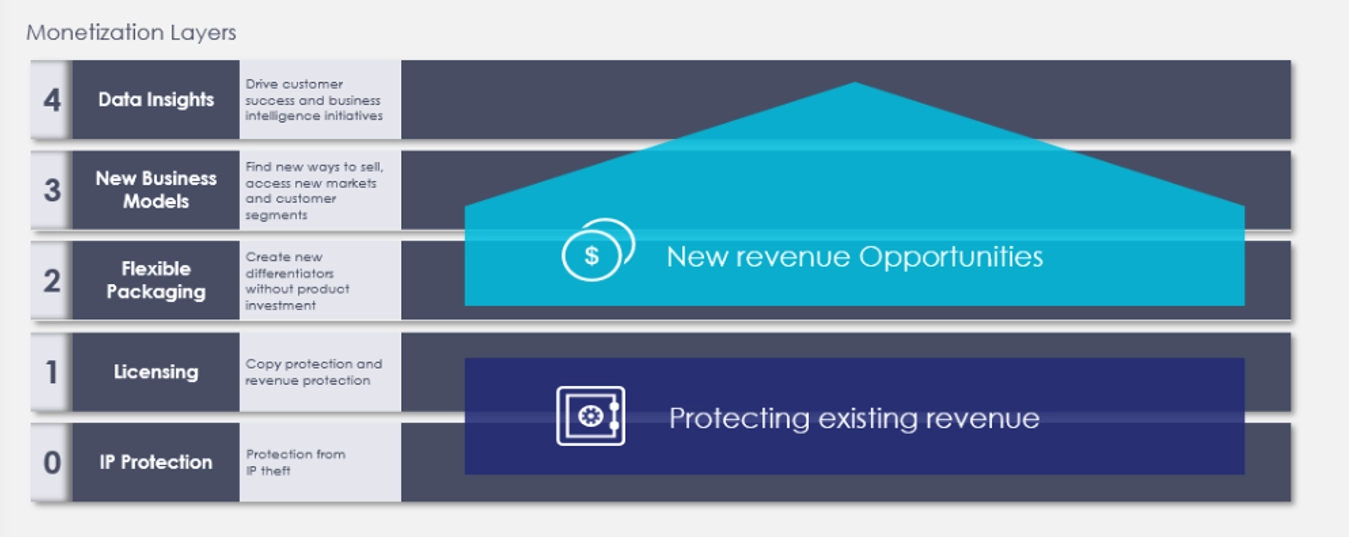
Software Protection
Piracy and misuse can undermine any monetization strategy. If anyone can copy, tamper with, or clone your software, every other monetization layer is built on sand. Protection is the base: it keeps unauthorized copies out, preserves the integrity of your code, and ensures only paying users run legitimate builds. Do this well and pricing, packaging, and enforcement all work as intended. Do it poorly and value leaks—quietly, continuously, and often invisibly.
Modern software protection is a layered system designed to be invisible to paying customers. At the application level, security wrappers add encryption and anti-tamper controls so binaries can’t be cracked or altered, and they can be secured without recompiling your code—critical when you need to protect multiple versions and releases at once. Next, intelligent fingerprinting binds use to the right identity or environment (user, device, or both) and adapts to where software runs—on hardware, in VMs, or in containers.
Software Licensing and License Enforcement
License enforcement is the layer of software monetization that ensures compliance of vendor’s usage rules. Every time someone uses a software product, the license enforcement mechanism checks their permissions and applies the terms.
The benefit of this layer isn’t only about blocking piracy or preventing bad actors from copying your code, it’s about managing the gray areas—unintentional overuse, extra users added without approval, or trial versions that quietly carry on beyond their time frame. Left unchecked, these gaps drain revenue and create uneven customer experiences.
Enforcement is like a guardrail that ensures customers can only use what they’ve paid for. If the user exceeds their terms, the system recognizes the issue, prevents it, and alerts your customer of the infringement. It’s like the governor that some trucking companies use to regulate the vehicle speed so that the driver stays within the posted limits. It’s important to know how you want your software to respond to overuse. Not all overuse requires an immediate cut off. You don’t want to damage the relationship with your customer should they lose access unexpectedly. The goal is to capture all the revenue you’re entitled to but enforce it in a way that doesn’t damage customer trust or experience.
The positive relationship is further extended when customers know they’re getting what they paid for, and vendors know their contracts are being applied fairly. Both sides benefit from clarity: rights are transparent, limits are consistent, and growth conversations not based on guesswork.
Packaging Flexibility
Think of your existing products, features, and services as building blocks that you can mix and match to create new bundles and launch them quickly. Packaging flexibility means you can reconfigure what customers get without touching your code or waiting for new product releases.
At this stage, you're not overhauling your entire pricing strategy or changing how you license software—you're simply rearranging the offerings you have to generate interest and see what resonates with customers. This approach lets you test the waters without major commitments while gathering valuable data about what people want and are willing to pay for.
The key is separating your product capabilities from customer access rights. Instead of baking packaging decisions into your software , you manage everything through a central system that controls what each customer can use. This means your product and marketing teams can create new packages, pricing tiers, and upgrade options on their own, without having to wait for developers to make changes—a significant savings in time and resources.
First, create product bundles that appeal to different customer segments. Next, actively promote cross-selling opportunities, and finally, offer discounts for multi-product packages. You can also bundle services with core products to add value and drive adoption.
Business and License Model Flexibility
Once you've mastered packaging, the next step is aligning your business models with the way customers want to buy and use your software . To do so effectively, map your product offerings to specific customer segments, with their value drivers in mind. Then choose the right monetization model—whether that's subscription, usage-based, user-based, node-locked—based on the customer’s price sensitivity.
The power here is agility: When licensing terms are managed through a separate entitlement system rather than hardcoded into your product, you can launch new pricing models in weeks instead of months. This flexibility becomes crucial as customer expectations shift from perpetual licenses to subscriptions, from flat-rate access to usage-based pricing, and from bundled software to modular SaaS services. Usage-based pricing is becoming increasingly important, especially with standalone AI offers or AI add-ons.
As discussed in Software Licensing and Enforcement, license enforcement is what makes modern business models work. Whether it's monthly subscriptions, pay-per-use pricing, different feature levels, or credit-based systems, companies need a reliable way to ensure customers follow the rules and pay appropriately.
Key actions include clearly defining your ideal customer profile and buying personas, establishing licensing and entitlement systems in an agile product catalog, and integrating robust entitlement systems within your CRM, ERP, and billing platforms so commercial terms and product access rights stay synchronized.
Be careful to avoid hardcoded licensing logic that makes it difficult to bring new pricing models to market, insufficient sales training on your product suites, and lack of usage and entitlement data needed to make informed pricing and packaging decisions.
Usage Insights
Usage insights are the intelligence layer of monetization. When you can see which features customers rely on, how often they log in, or where they’re bumping up against limits, you can act with precision. Let’s look at the actionable insights you gain from this clarity.
- Customer success teams act proactively. If adoption is low, you can step in before renewal is at risk. If usage is high, you know you have a healthy account that’s could be ripe for expansion.
- Upsell and cross-sell surface clearly. When customers reach the ceiling of what they bought before their contract term is up—whether it’s seats, features, or transactions—that’s your signal to offer the next tier or add-on.
- Product development becomes more data driven. You know which features stick, which are ignored, and where to invest. No more guessing.
- Usage-based models can be implemented smoothly. You can charge by API call, transaction, or feature usage, with consumption tracked directly through entitlement and licensing data. Real-time usage insights give you the accuracy, transparency, and control needed to monetize consumption pricing at scale.
And just as important: Customers benefit too. They appreciate transparency. They know what they’ve used, what they’ve paid for, and when it makes sense to expand. That builds trust, not friction.
In the bigger picture, usage insights are what make monetization adaptive. Instead of running your business on assumptions, you operate on data. You spot churn risks early, identify revenue opportunities at the right moment, and shape your roadmap around what delivers the most value.
With usage intelligence in place, monetization stops being reactive. It becomes a system that grows alongside your customers—driving retention, expansion, and new revenue models all at once.
What Are the Benefits of Effective Software Monetization?
When software monetization is implemented well, the impact extends across the business:
- Revenue growth through new pricing and licensing models.
- Reduced leakage from piracy and misuse, protecting revenue that would otherwise be lost.
- Operational efficiency by automating entitlement, provisioning, and fulfillment.
- Customer satisfaction with instant activation, transparent license portals, and flexible options.
- Faster innovation by giving business teams control over packaging and pricing without engineering delays.
Sentinel Licensing and Entitlement Management Platform
Take an interactive product tour to see how Sentinel can help you monetize and grow your business.
What Are The Best Licensing Models For Monetizing Software?
Each model has strengths and trade-offs. The most successful vendors continuously adapt their mix of models as markets and customer behavior evolve.
- Flat pricing – one fixed price regardless of usage. Can be offered through a subscription or perpetual
- Per-user (seat) pricing – charges based on the number of named users.
- Concurrent licensing – a pool of licenses shared across multiple users.
- Feature-based pricing – different editions unlock different capabilities.
- Value-based pricing – aligns fees with the measurable outcomes customers achieve.
- Usage-based pricing – customers pay for actual consumption, ideal for AI and APIs.
- Freemium – free entry-level access with upsell paths to premium tiers.
- Trial-to-paid conversions – evaluation periods that lead into subscriptions.
- Token licensing – customers purchase credits they can allocate flexibly across products and features.
- Node-locked licensing – ties software access to specific hardware or device identifiers.
- Network licensing – centralized license management across multiple machines on a network.
- User-based licensing – authentication-based access where users log in with credentials rather than device-tied keys.
What Emerging Trends Are Impacting Software Monetization?
1. Device and Edge Computing Monetization
Software monetization at the edge turns hardware into a platform—where new features, upgrades, and usage-based models drive ongoing growth long after the initial sale.
But monetizing software in IoT and edge environments presents different challenges from traditional SaaS or enterprise deployments. Instead of a handful of centralized servers, vendors may be managing millions of distributed devices running in factories, hospitals, vehicles, or consumer homes—often with limited or intermittent connectivity.
Device monetization challenges:
- Connectivity limits. Devices cannot always connect back to a central server, so license validation and enforcement must work locally, with the ability to sync once connectivity resumes.
- Scalability. Managing rights and updates across fleets of devices requires automation because manual entitlement management quickly breaks at scale.
- Usage-driven pricing. Monetization models often rely on data throughput, activations, or feature consumption—requiring usage tracking even in constrained environments.
- Partner and channel sales. Devices are frequently delivered through OEMs, telcos, or distributors, meaning entitlements must be applied consistently across multiple layers of the value chain.
Device monetization solutions:
- A centralized entitlement system that defines and manages customer rights in one place, ensuring consistency between what’s sold, what’s billed, and what the device enforces.
- Local license enforcement capabilities, so devices can continue operating securely without a constant internet connection.
- Granular feature control at the device level, enabling vendors to unlock new value through software updates instead of hardware swaps.
- Usage data collection even in offline scenarios, enabling usage-based pricing in complex deployment environments.
- Delegated partner management, allowing distributors and service providers to provision entitlements while the vendor retains visibility and control.
By bringing these elements together, companies can transform IoT and edge devices from one-time product sales into flexible, recurring revenue streams.
2. Portfolio Monetization
What is portfolio monetization? Portfolio monetization is the strategy of managing revenue across a suite of products by unifying licensing, packaging, and entitlement systems. It streamlines operations, simplifies customer experiences, and enables cross-product offers that maximize growth at scale.
As software vendors grow, they often find themselves managing not just one product, but an entire portfolio of applications, services and (as discussed in the section above) hardware. Some products may have been acquired through M&A, while others were built in-house over time. Each comes with its own licensing model, entitlement rules, and customer workflows.
As a result, the myriad product lines may have different activation processes, inconsistent packaging, or siloed entitlement systems. Many issues, with one problem: fragmentation. For customers, this creates confusion and friction when they go to buy or use products from different sections of the product suite. For vendors, it increases operational overhead and makes it difficult to launch unified offers across the portfolio.
This is where portfolio monetization emerges as a strategic trend. Instead of treating each product or product line in isolation, portfolio monetization focuses on promoting revenue across the entire suite. That means:
- Unified packaging and pricing. Vendors can combine products and features from multiple business units into bundles, tiers, or cross-product offers that are easier for customers to evaluate and buy.
- Consistent customer experience. A single interface for activation, self-service, and entitlement management reduces friction and builds trust across the portfolio.
- Cross-product entitlements. Customers can be granted rights that span multiple products—such as bundles of cloud services, on-prem tools, and add-on features—without manual reconciliation.
- Operational scale. Centralized entitlement and fulfillment reduces the need to manage each product line separately, freeing teams to focus on strategy rather than administration.
Portfolio monetization is especially powerful for enterprise software companies that have grown through acquisition. Instead of maintaining a patchwork of licensing systems, they can create a cohesive commercial layer across the business, unlocking new ways to package, price, and deliver value at scale.
By shifting from product-by-product expansion to portfolio-level coordination, vendors turn a collection of individual products into a unified growth engine that adapts quickly to market demands and maximizes revenue across the business.
3. The Need To Prove Revenue From AI Investments
AI introduces yet another challenge over traditional software: costs scale with usage. Every additional API call or inference requires compute data, and infrastructure. The more popular an AI product becomes, the more expensive it is to operate.
This “success paradox” makes the right monetization model critical for revenue growth. Companies can’t rely on flat subscription models alone—they need pricing strategies that reflect both customer value and vendor costs. Three approaches are emerging:
- Static metrics such as per-user or per-feature tiers, simple to communicate but often disconnected from cost.
- Usage-based pricing tied to tokens, API calls, or compute time, aligning revenue with consumption.
- Outcome-based pricing that charges for results like cost savings or efficiency gains, though complex to measure.
Because AI technology and regulation are evolving rapidly, the most important trait of an AI monetization strategy is flexibility. Vendors must be able to adapt packaging, pricing, and entitlement enforcement as both costs and customer expectations shift.
Conclusion
Software monetization needs to be an ongoing project that evolves with technology, markets, and customer expectations. The fundamentals remain constant: protect your software and intellectual property, understand your customers' needs, and align your pricing with the value you deliver.
As we've seen throughout this guide, the trends shaping software monetization—from IoT and edge computing to AI and cross-product portfolio offers—all point toward greater complexity and higher stakes. The revenue opportunities are larger than ever, but so are the risks of getting it wrong. Customers have more choices and higher expectations, while piracy and revenue leakage continue to pose significant threats.
The path forward is clear: companies must invest in building mature monetization capabilities that can scale with their ambitions. This means replacing ad-hoc licensing approaches with an integrated platform that supports the full monetization lifecycle—from protection and packaging to enforcement, entitlements, and insights.
Most importantly, software monetization is about creating better relationships with your customers and building a foundation for long-term, sustainable growth.
How Thales Sentinel Helps Drive Software Monetization
For most software businesses, monetization is no longer just about selling licenses—it’s about continuously adapting to new business models, packaging strategies, and customer expectations. The challenge is finding ways to unlock new revenue streams while still keeping operations efficient and customer experiences seamless.
Thales’ Sentinel platform enables you to flexibly package, price, and deliver your software—whether it’s on-premises, in the cloud, or delivered as a hybrid service. With Sentinel, you can test new models without engineering rework, quickly respond to market demands, and scale monetization strategies as your business evolves.
For over thirty years, we’ve seen companies struggle with rigid licensing systems or manual processes that slow innovation and leave money on the table. Sentinel changes that by giving you a unified monetization hub built on proven entitlement and licensing capabilities.
Our unmatched combination of license management, entitlement control, and usage intelligence empowers your teams to accelerate growth while ensuring compliance and control.
Contact a specialist today for a personalized assessment of how we can help you maximize your software monetization potential.
